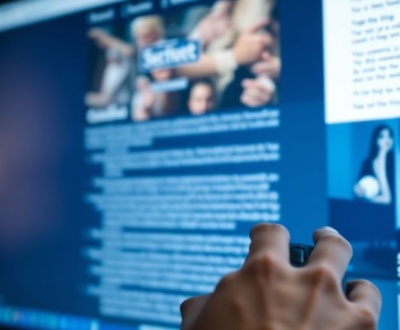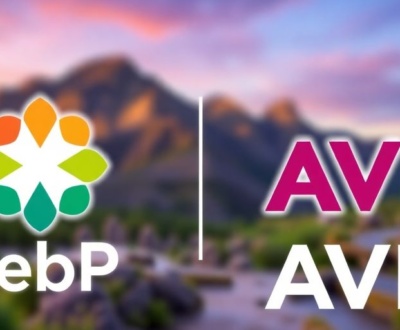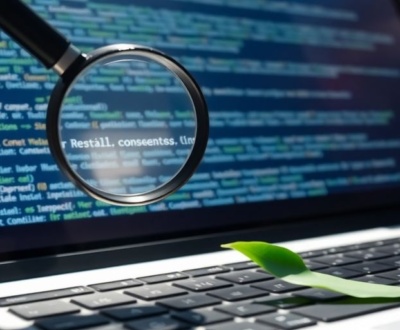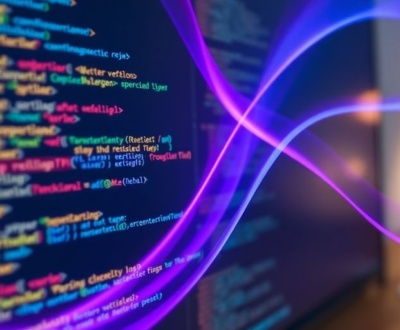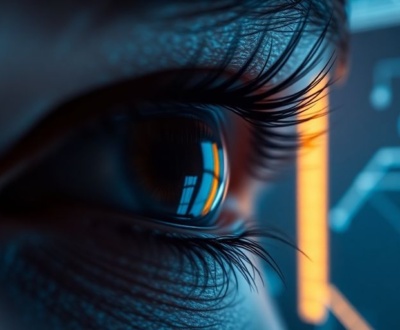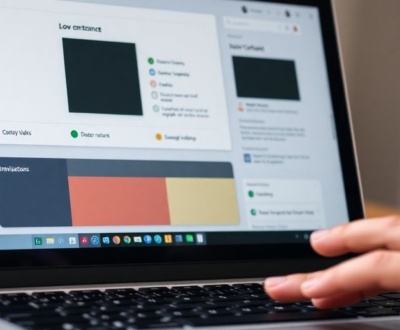AI video is becoming a big deal in design work, right? But figuring out the rules for who owns what, especially with copyright, is kind of messy. It’s not always clear what you can use, what you can’t, and who gets credit when a computer helps make something. This article will try to clear up some of that confusion about ai video copyright design usage, looking at current laws and what might happen next.
Key Takeaways
- Works made only by AI usually can’t be copyrighted because current laws say a human has to create them.
- The U.S. Copyright Office has rules that say human input is needed for copyright protection, even if AI is involved.
- Using copyrighted stuff to train AI models is a hot topic, with many lawsuits trying to figure out what ‘fair use’ means here.
- Always check the terms for AI video tools; some let you use content for business, others don’t.
- Laws about AI copyright are different around the world, so what’s okay in one place might not be in another.
Understanding AI Video Copyright Design Usage
Defining AI-Generated Content
So, what exactly is AI-generated content? It’s anything created, in part or in whole, by an artificial intelligence system. This could range from a simple script to a fully rendered video. The tricky part is figuring out where the AI ends and human input begins. This distinction is super important when we start talking about copyright. Think of it like this: if you ask an AI to make a video of a cat playing piano, is that video really yours? The answer is more complicated than you might think.
The Human Authorship Requirement
Copyright law generally protects works of human authorship. This is a key concept. For something to be copyrightable, a human needs to have contributed some original, creative input. If an AI spits out a video with zero human intervention, it’s unlikely to be protected by copyright. The U.S. Copyright Office has been pretty clear on this point. It’s not enough to just prompt an AI; you need to actively shape and mold the output to make it your own. This is where things get interesting, because the line between prompting and authoring can be blurry. It’s a bit of a gray area, and the courts are still trying to figure it out. For example, if you use AI to generate a background for your video, but you film and edit the main content, you may have a stronger claim to copyright. It all depends on the specifics.
Distinguishing Human and Non-Human Elements
Okay, so how do you actually tell what parts of a video are human-made and what parts are AI-generated? This is where it gets really tricky. Imagine you’re using an AI tool to create a video. You write the script, but the AI generates the visuals and music. Which parts can you copyright? The script, probably. But the visuals and music? Maybe not, unless you’ve significantly altered them. The U.S. Copyright Office emphasizes the importance of identifying human authors, describing their contributions, and distinguishing between human and non-human elements. They note that copyright protection may exist for works that include AI-generated material, provided the human-contributed material standing alone rises to the level of protectability, although any registration will be required to disclaim the solely-AI-generated content.
It’s important to keep detailed records of your creative process. Document everything you do, from the initial prompt to the final edit. This will help you demonstrate the extent of your human contribution if you ever need to defend your copyright.
Copyrightability of AI Video Content

Why AI Content Cannot Be Copyrighted
So, can you actually copyright something an AI spits out? Right now, the answer is generally no. The big reason is the requirement for human authorship. Copyright law in the US, and many other places, is pretty clear that a work needs to be created by a human to get copyright protection. If an AI is the sole creator, it doesn’t qualify. It’s like if your dog paints a picture – cute, but not copyrightable.
The Role of Human Input in Copyright
Okay, but what if a human does something? What if you give the AI a really detailed prompt, or edit the video it makes? That’s where it gets a little fuzzy. The key is how much creative control the human had. If you just typed in a simple prompt and the AI did all the work, you probably can’t copyright it. But if you significantly shaped the video with your own creative choices, you might be able to copyright those specific contributions. It’s all about showing that your human input is what makes the video unique and original.
US Copyright Office Guidelines
The US Copyright Office has actually put out some guidelines on this. Basically, they say that if a work contains AI-generated material, you need to specify what parts were made by the AI and what parts were made by a human. You can only copyright the parts that a human created, and those parts need to be original enough to qualify for copyright on their own. It’s a bit of a headache, but it’s their way of trying to deal with this new technology within the existing legal framework.
It’s important to remember that copyright law is constantly evolving, especially when it comes to AI. What’s true today might not be true tomorrow, so it’s always a good idea to stay updated on the latest legal developments.
Navigating Copyright Infringement with AI Video
Fair Use Doctrine in AI Training
So, AI companies train their models using tons of data, and a lot of that data is copyrighted. The big question is: is that okay? Well, the fair use doctrine comes into play here. It basically says you can use copyrighted material without permission under certain conditions. Think of it like using a snippet of a song in a review – that’s usually fair use. But, if an AI starts spitting out videos that are basically copies of existing movies, that’s a problem. It’s a gray area, and the courts are still figuring it out.
Substantial Similarity in AI Outputs
Okay, so let’s say an AI creates a video. How do you know if it’s infringing on someone else’s copyright? That’s where "substantial similarity" comes in. It’s not enough for the AI video to just be similar; it has to be substantially similar to another work. This is tricky because AI can create things that are inspired by existing works but not direct copies. Courts look at things like the overall look and feel, the characters, and the plot. It’s a case-by-case thing, and there’s no easy answer. There’s no federal legal consensus for determining substantial similarity.
Legal Cases Against AI Companies
There are already lawsuits popping up against AI companies. The main argument is that these companies are using copyrighted material to train their models without permission. If the courts decide that this is infringement, it could be a big deal. Companies could be on the hook for a lot of money. One thing you have to know about copyright law is, for infringement of one thing only — it could be a text, an image, a song — you can ask the court for $150,000. So imagine the people who are scraping millions and millions of works.
These lawsuits could change the whole landscape of AI video. It’s something to keep an eye on. If AI companies lose these cases, they might have to rethink how they train their models. It could also lead to new laws and regulations around AI and copyright.
Terms of Service and Licensing for AI Video Tools
It’s easy to just click ‘I agree’ without reading, but when you’re dealing with AI video tools, understanding the terms of service (ToS) and licensing agreements is super important. These documents dictate what you can and can’t do with the AI-generated content, and ignoring them could land you in legal hot water. I know, it sounds boring, but trust me, it’s worth the time.
Reviewing Tool Agreements
Tool agreements are the rulebook. They spell out the rights and responsibilities of both the user and the AI tool provider. You need to know what you’re getting into. Look for clauses about:
- Ownership of the generated content: Who owns the copyright? Is it you, the AI company, or a shared ownership?
- Usage restrictions: Are there limits on how you can use the video? Can you use it for commercial purposes, or is it only for personal use?
- Data privacy: How is your data being used? Is the AI company collecting your prompts and using them to train their models?
- Liability: Who is responsible if the AI-generated video infringes on someone else’s copyright?
I remember this one time, a friend used an AI image generator for a logo, thinking it was free to use. Turns out, the ToS stated that commercial use required a paid license. He had to take down his entire website and rebrand. A little reading could have saved him a lot of trouble.
Commercial Use Permissions
Can you make money off AI-generated videos? That’s the big question. Many AI video tools have different rules for personal and commercial use. Some might allow commercial use with a paid subscription, while others might prohibit it altogether. Always check the fine print. If you’re planning to use AI videos for marketing, advertising, or any other money-making venture, make sure you have the right permissions. Otherwise, you could be facing a copyright infringement lawsuit.
Avoiding Infringement Through Compliance
Compliance is key to staying out of trouble. Here’s how to make sure you’re playing by the rules:
- Keep records: Document the AI tools you use, the prompts you enter, and the licenses you obtain. This can be helpful if you ever need to prove that you acted in good faith.
- Stay updated: AI video tools are constantly evolving, and their terms of service can change frequently. Make it a habit to review the agreements periodically.
- Seek legal advice: If you’re unsure about any aspect of the ToS or licensing agreement, consult with an attorney who specializes in intellectual property law. It’s better to be safe than sorry.
Global Perspectives on AI Video Copyright
United Kingdom’s Approach to AI Copyright
The UK stands out because it actually offers copyright protection for works solely generated by a computer. It’s one of the few countries that does this. This means if an AI creates something without any human input, it could still be protected under UK law. It’s a pretty unique approach compared to other nations.
European Union’s AI Act
The European Union is taking a proactive stance with its AI Act. This act aims to address many of the concerns surrounding generative AI. It’s a sweeping piece of legislation that’s already in effect and is designed to regulate AI development and use across the EU. The AI Act is intended to create a framework for responsible AI innovation, focusing on risk management and ethical considerations.
International Legal Landscape
Globally, the legal landscape is still evolving. Many countries are grappling with how to adapt existing copyright laws to AI-generated content. The US courts are trying to figure out how to measure human input in AI models, and this could end up looking like what we see in other Western nations. If AI companies are found to have infringed on copyrighted work, there could be more lawsuits and potentially expensive penalties. It’s a complex situation with no easy answers, and international cooperation will be key to creating a consistent and fair legal framework.
The future of AI copyright hinges on finding a balance between protecting the rights of human creators and fostering innovation in AI technology. A sustainable cycle of creativity and improvement for AI models depends on preserving the industries that generate the data they feed on.
Future of AI Video Copyright Law

The legal landscape surrounding AI-generated video is still very much under construction. It’s like watching a building go up – you can see the shape it’s going to take, but there’s a lot of hammering and sawing still to come. We’re seeing new challenges to old laws, and the courts are trying to figure out how to apply existing rules to this brand-new technology. It’s a bit messy, honestly, but also kind of exciting.
Evolving Legal Frameworks
Right now, the laws are playing catch-up. Legislators and courts are grappling with how to define authorship, ownership, and infringement in the age of AI. We’re seeing different approaches around the world. For example, the UK has some copyright protection for computer-generated works, while the EU is trying to get ahead of the curve with its AI Act. In the US, it’s mostly up to the courts to sort things out through lawsuits. It’s a patchwork of regulations, and it’s likely to stay that way for a while as things evolve.
Impact of Pending Lawsuits
Those lawsuits against AI companies? They’re a big deal. They could set precedents that shape the future of AI copyright. If companies like Getty Images or The New York Times win, it could mean AI developers have to be much more careful about how they train their models. It could also mean they have to pay creators for using their work. On the other hand, if the AI companies win, it could open the door for even more AI-generated content, with fewer restrictions. Either way, these cases are worth watching closely.
The outcomes of these lawsuits will likely determine the scope of fair use in AI training and the extent to which AI-generated content can be considered original. This will have a direct impact on the business models of AI companies and the rights of human creators.
Sustainable Creativity in AI Design Usage
Ultimately, the goal should be to find a way for AI and human creators to coexist. We need a system that encourages innovation while also protecting the rights of artists and designers. This might mean new licensing models, better ways to track the use of copyrighted material in AI training, or even new laws that specifically address AI-generated content. It’s a tough problem, but it’s one we need to solve if we want a sustainable creative ecosystem.
Here are some things that might help:
- Clear guidelines on what constitutes fair use in AI training.
- Tools for artists to track and manage the use of their work in AI models.
- New business models that allow creators to benefit from AI-generated content.
Beyond Copyright: Other Intellectual Property Concerns
Patent Challenges with AI Video
AI video creation raises some interesting questions when it comes to patents. Can you patent a video generated by AI? Well, the current stance is tricky. Patents typically require human inventorship, and if an AI is the primary creator, it doesn’t quite fit the bill. However, if a human significantly directs the AI’s process, leading to a novel and non-obvious outcome, a patent might be possible. It’s a gray area, and we’ll likely see more legal battles as AI becomes more sophisticated.
Trade Secret Implications for AI Design Usage
Trade secrets are another area to consider. If you’re using AI video tools, especially custom-built ones, you might have valuable trade secrets related to your prompts, workflows, or the specific AI models you’re using. Protecting this information is key. Think about:
- Limiting access to your AI tools and data.
- Using strong confidentiality agreements with employees and contractors.
- Implementing security measures to prevent unauthorized access to your systems.
It’s important to remember that trade secrets are only protected if you actively work to keep them secret. If your competitors can easily figure out your methods, you might lose that protection.
Protecting Proprietary Information
Beyond patents and trade secrets, there’s the broader issue of protecting your proprietary information. This includes things like your brand identity, unique characters, and specific visual styles. Even if you can’t get a patent or trade secret protection, you can still take steps to prevent others from copying your work. This might involve:
- Using watermarks or other identifying marks on your videos.
- Monitoring the internet for unauthorized uses of your content.
- Sending cease and desist letters to those who infringe on your rights.
Here’s a quick look at how different IP protections might apply:
| Type of IP | How it Applies to AI Video | Challenges |
|---|---|---|
| Copyright | Protects the specific arrangement of elements in a video, but not ideas. | AI-generated content may lack sufficient human authorship. |
| Patents | Protects novel and non-obvious inventions. | AI as the inventor raises questions of eligibility. |
| Trade Secrets | Protects confidential business information. | Requires active efforts to maintain secrecy. |
Conclusion
So, what’s the takeaway here? Well, using AI video in your design projects is pretty cool, but you gotta be smart about it. The rules around copyright for AI stuff are still kind of fuzzy, and they’re changing all the time. It’s not like a clear-cut "yes" or "no" for everything. You really need to check the terms for any AI tools you use and think about where the content comes from. Staying up-to-date on new legal cases and guidelines is a good idea too. Basically, if you’re careful and do your homework, you can use AI video without running into big problems. It’s all about being aware and making good choices.
Frequently Asked Questions
Can AI content be copyrighted?
No, content made only by AI can’t be copyrighted in the United States. Copyright law usually requires a human creator.
Why can’t AI content be copyrighted?
AI-made content can’t be copyrighted because copyright rules say a human has to create the work. Since AI isn’t seen as a human or an author, its creations don’t get copyright protection.
Can AI art be copyrighted?
No, AI art can’t be copyrighted. Just like other AI-generated stuff, it’s not considered a human’s work. Since AI isn’t legally an author, no one can copyright AI-made art.
Does generative AI break copyright laws?
It depends. AI might break copyright laws if it uses copyrighted works to learn from and then makes new content that is very similar to the original. But there’s no clear rule yet on how similar is too similar.
Can AI be sued for copyright?
Companies that make and run AI systems might get sued for copyright problems. There are already lawsuits against AI companies because they might have used copyrighted works without permission to train their AI or create content.
How do you avoid copyright problems with AI?
To avoid copyright issues with AI, always check the rules and agreements for the AI tools you use. These documents will tell you what you can and can’t do with the content the AI makes, especially if you plan to use it for business.
About this blog
We are a digital marketing company with a focus on helping our customers achieve great results across several key areas.
Request a free quote
We offer professional SEO services that help websites increase their organic search score drastically in order to compete for the highest rankings even when it comes to highly competitive keywords.


